As late summer approaches across much of the globe, cicadas emerge from the ground to breed. These large, loud insects are fascinating for backyard wildlife enjoyers. However, they spend most of their time living high up in trees, so it’s much easier to hear them than see them. Encountering a cicada in the wild can be exciting, because they are large, weird-looking insects. I’ve been getting a lot of reader mail about cicadas recently, and one question in particular pops up more than the others. “Do cicadas have mouths?”
Of course, this ties in with a major concern that many people have when encountering or handling these big bugs. Can cicadas bite? In this Naturalist Answers post, let’s learn about cicadas, their mouths, and the possibility of cicada bites.
A silly question? Not at all!
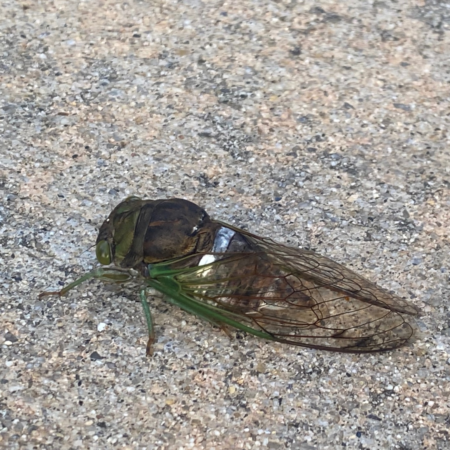
When I mentioned this post to a friend, she pointedly asked me whether the question I was answering made any sense at all. Don’t all animals have mouths? Shouldn’t the answer be “Duh, of course?
However, I don’t think this is a ridiculous question at all. In fact, there are many insect species that don’t really have functioning mouthparts as adults. This is principally because the adult (usually winged) form of some insects are typically only interested in dispersing between locations, mating, and producing young.
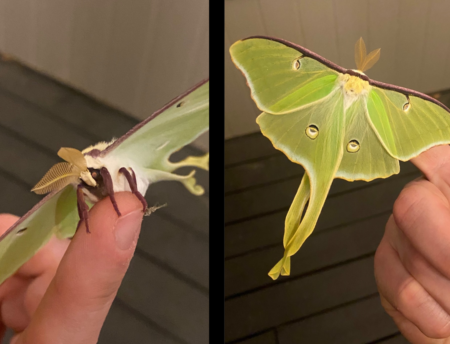
In fact, many moths (from the order lepidoptera) don’t have mouths at all. One of the most interesting and famous examples are Luna moths (Actias luna) from North America. These huge, colorful, almost mystical-looking insects come out at night in search of mates, and only live for a few days to a week. Having extra mouthparts and a diet wouldn’t help them do a better job during such a short interval.
Cicadas definitely have mouths.
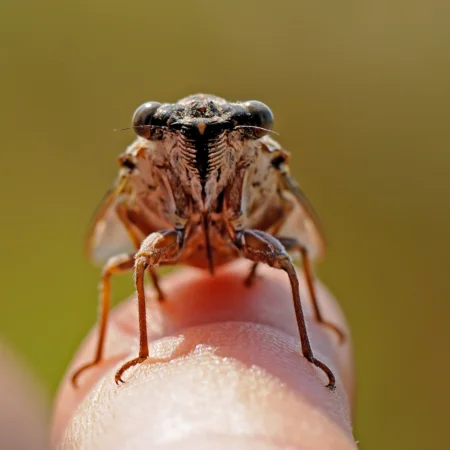
That being said, the cicadas (superfamily Cicadoidea) do, in fact, have mouths. And weird ones, to boot! If you have already read my post on common insect orders, you might guess that the cicada’s mouthparts are similar to other animals in its order. And that’s correct!
As members of the order Hemiptera, cicadas have piercing, sucking mouthparts rather than biting or chewing ones. The mouthparts form a sheath that products a very sharp, needle-like stylet. Cicadas drink tree sap out or branches or trunks when they feed. They do this by pushing their stylet to puncture the tree’s bark, then using powerful sucking muscles to draw the sap into their digestive system.
You typically won’t see a cicadas mouth very easily, since they aren’t visible from the front. Instead, the sheath is usually tucked down below the head, and lays lengthwise down their ventral (belly/chest) surface. It remains tucked away there until the cicada decides to eat, when it bends back forward to plunge into plant tissues.
Do cicadas bite?
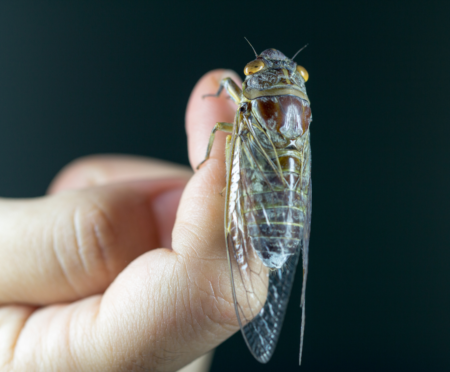
The short answer to this is yes. It goes along with the adage, “anything with a mouth can hurt you”. And just like a rabbit or a pet mouse or hamster, or an ornery poodle, cicadas have mouths and can also bite. However, in my experience it is a very rare occurrence. Entomology textbooks that I have read say the same thing; they will bite occasionally when handled.
Nonetheless, the idea that they can bite has really blown up on the internet. The natural history meme group Wild Green Memes for Ecological Fiends seems to have really run with this one. Specifically, people keep making jokes about how cicadas crave “hand meat” and are always trying to bite folks. Hilarious as it is, it should sound questionable to anyone who knows their herbivorous, sap-eating ways. But then, how or why do cicada bites happen?
What will make a cicada bite you?
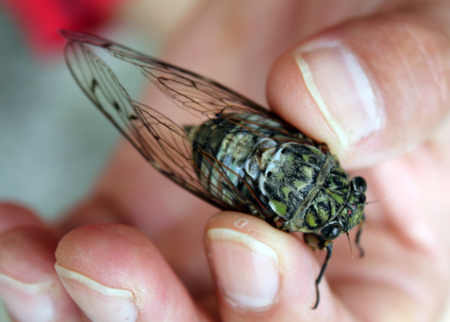
In a previous post, I explored the question of why bugs bite in the first place. Most biting insects do it for feeding (to get a blood meal, usually to get protein for producing eggs), or for defense. Whenever I have handled cicadas, their usual defenses involve buzzing their wings, making loud, vibrating sounds, and flailing their legs around. It doesn’t seem to me that they tend to bite to defend themselves.
Instead, other entomologists have suggested that most cicada bites to people are more accident than intentional. I won’t claim to know what’s going on in a cicadas head at any point, but perhaps at one point while sitting on a person they decide it’s worth a taste. Because of their hemipteran piercing mouthparts, this can be a very painful experience. Like getting a thick needle plunged into your skin.
No thank you! I’d rather be bitten by something chompy like a beetle or a dragonfly.
Is it safe to handle cicadas?
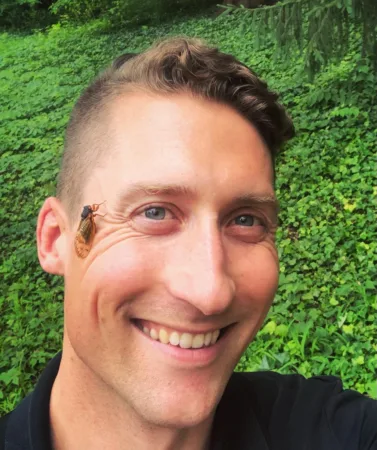
Cicadas remain one of the safest insects to handle. I had dozens all over me during the Brood X emergence of periodic cicadas back in 2021 and never received a bite. However, if you’re feeling cautious with a particular cicada, pick it up by its sides using your thumb and forefinger. That way it can’t maneuver to bite you, since they can’t really turn their heads. This is my approach much more often than not!
Want to learn more about these strange and amazing animals? Check out my post on wild cicada facts!
Thanks for reading!
I hope that you found this post helpful. As always, if you have more nature-related questions or want to learn more about cicadas, don’t hesitate to reach out. You can do so in the comments below, the Contact page, or using Social Media.

